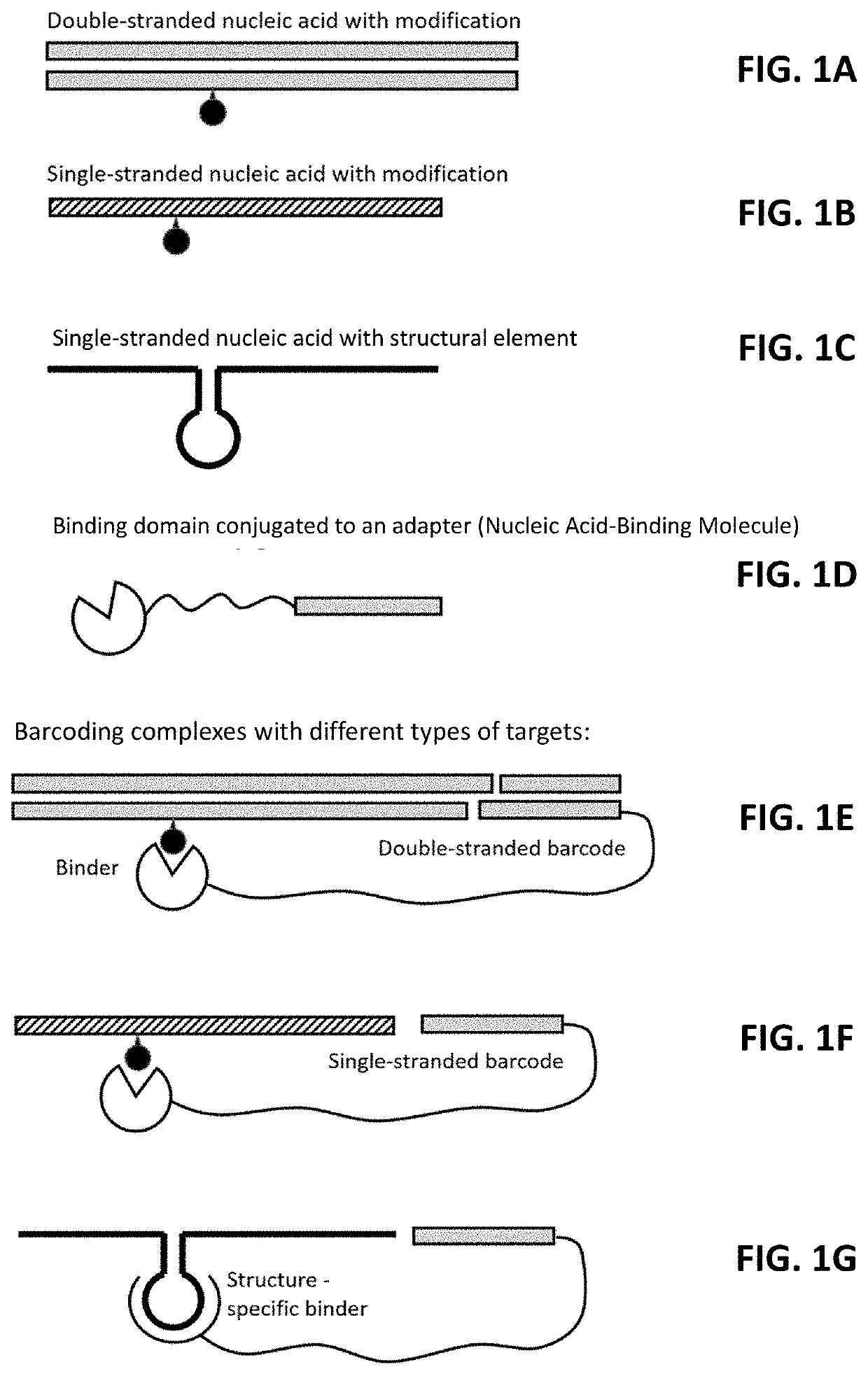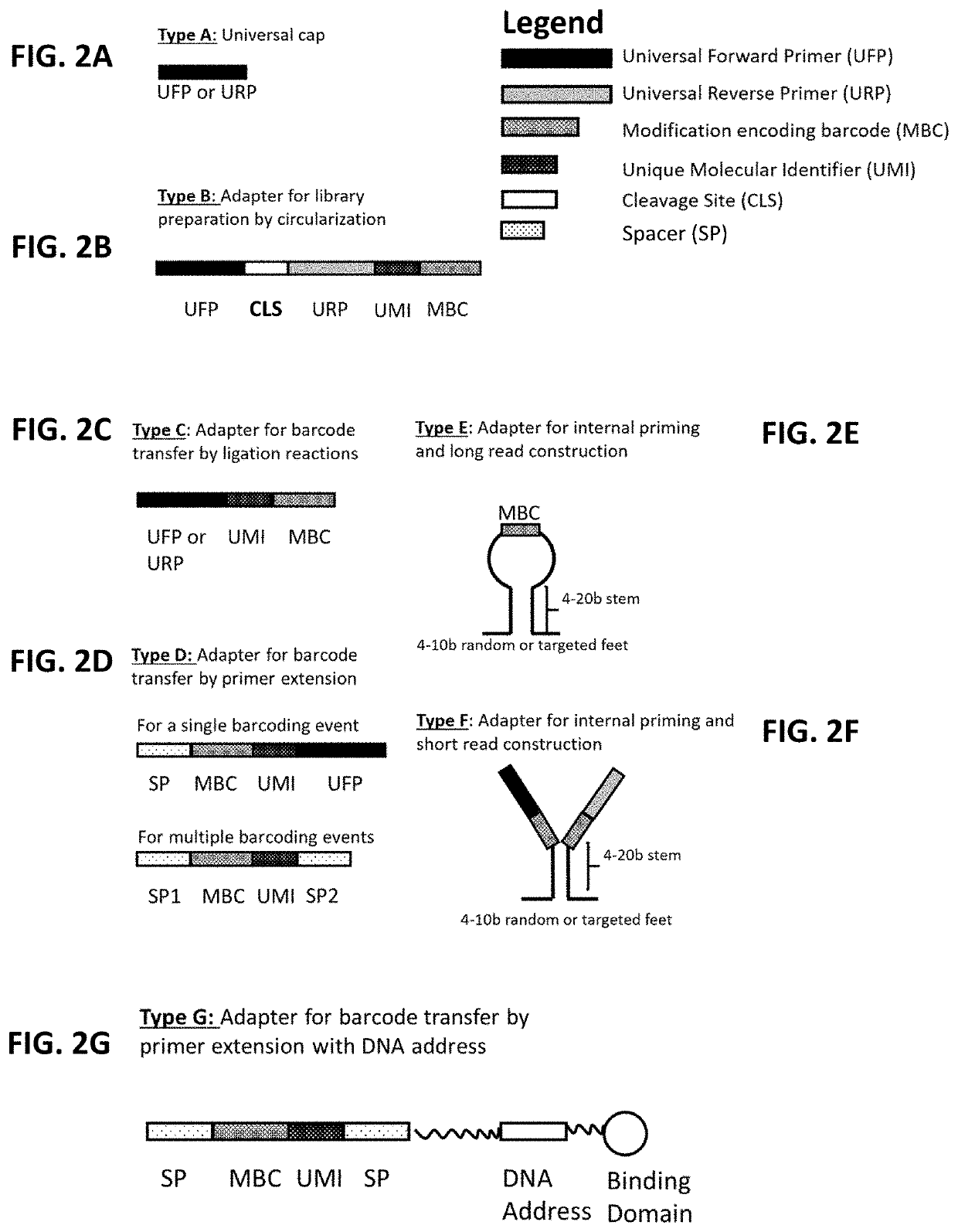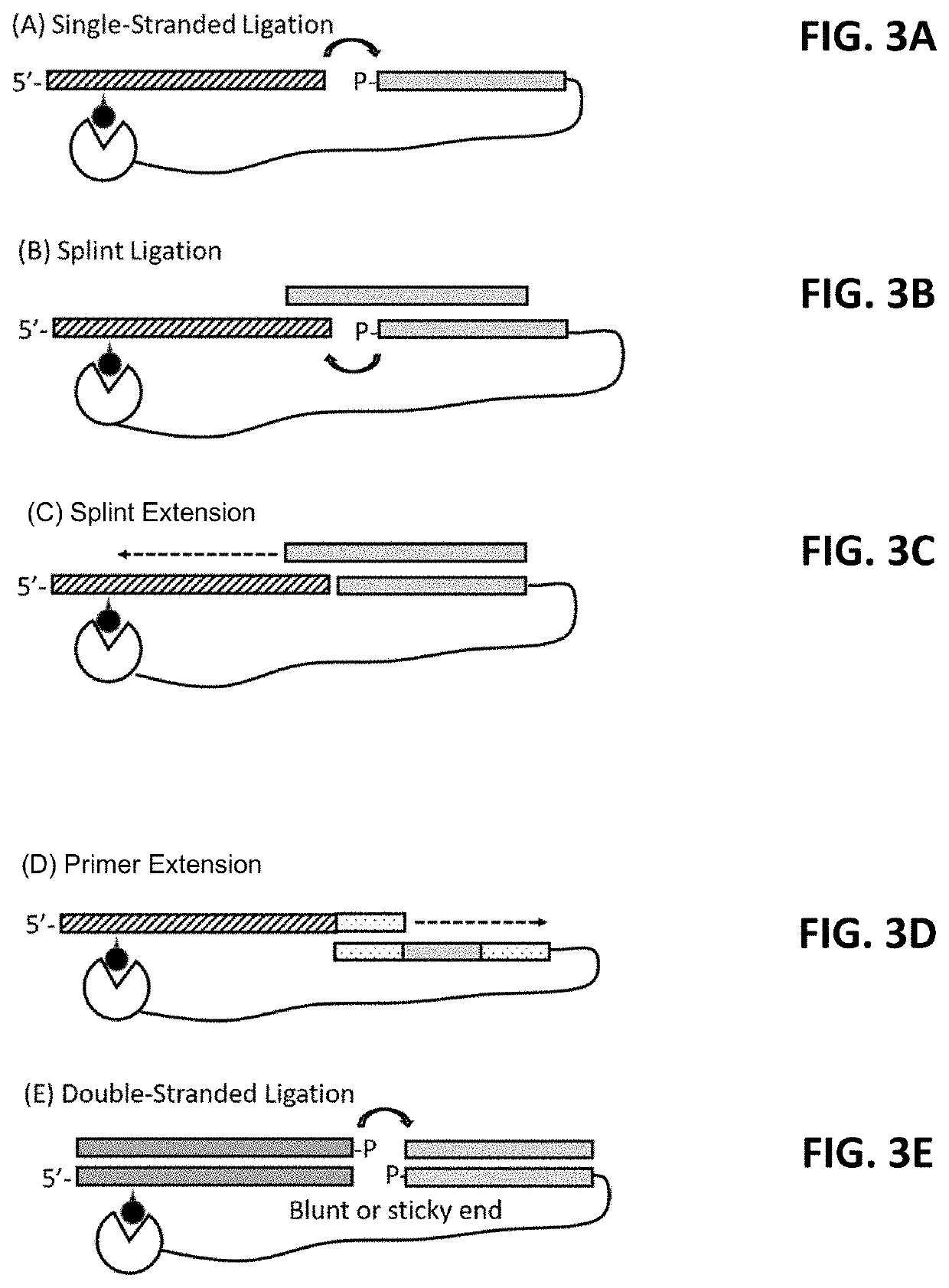Multiplexed profiling of RNA and DNA modifications
a rna and dna modification technology, applied in the field of multi-layered profiling of rna and dna modifications, can solve the problems of high sensitivity, little is known about the distribution of epigenetic changes throughout the genome, and almost nothing is known about the correlative levels of epitranscriptomic rna modifications and their changes in cells
- Summary
- Abstract
- Description
- Claims
- Application Information
AI Technical Summary
Benefits of technology
Problems solved by technology
Method used
Image
Examples
example 1
omain Design, Selection, and Characterization
[0214]Binding domains are designed for use in nucleic acid-binding molecules (also referred to as BACs (=binding domain adapter conjugates) that bind to N6-methyladenosine (m6A), pseudouridine (Ψ), Inosine (I) and 5-methylcytosine (m5C). Initially, a screen of commercially-available antibodies was performed. Antibodies having favorable characteristics (e.g., monoclonals, etc.) are selected for further characterization.
[0215]Initial antibody characterization was carried out by plate ELISA. Biotinylated RNA oligonucleotides (Horizon Discovery) comprising m6A (SEQ ID NO: 1), Ψ (SEQ ID NO: 2), I (SEQ ID NO: 3) or m5C (SEQ ID NO: 4) and unmodified reference oligonucleotides (SEQ ID NO: 5) as shown in Table 4 were immobilized on streptavidin-coated 96-well plates (Thermo Fisher, cat. no. 15125) at 4° C., followed by washing with phosphate-buffered saline (PBS). In a separate experiment, the oligonucleotides are converted into RNA / DNA heterodupl...
example 2
ng Binding Domain Mutational Profile and Truncation Pattern
[0217]The mutational profile and truncation pattern will be characterized for either (1) the antibodies identified in Example 1, or (2) derivatives thereof (e.g., scFvs comprising CDR sequences from the antibodies of Example 1). Specifically, binding domains, such as those described in Example 1 are bound to a nucleic acid target. The binding domain and nucleotide are crosslinked. After the target nucleotide is adapter-ligated, reverse transcription is used to generate cDNA which are PCR amplified and sequences to assess the mutational and truncation profile of the target nucleotide.
[0218]Initially, the mutational pattern that results from reverse transcription of antibody-bound RNA strands is evaluated with in vitro transcribed RNA. First, RNAs including one or more modifications (m6A, Ψ, and / or m5C) are generated by transcribing a 500 nucleotide RNA in vitro in the presence of varying ratios of modified and unmodified nucl...
example 3
on of Nucleic Acid-Binding Molecules Using Random Labeling of Binding Domains
[0222]Nucleic acid-binding molecules were prepared by conjugating DNA oligonucleotides to the antibodies described in Example 1 via amine reactive chemistry. Amino-modified DNA oligonucleotides were randomly attached to antibodies using an Oligonucleotide Conjugation Kit (Vector Labs, cat. no. S-9011-1). The first step was the modification of amino-terminated DNA oligonucleotides with the 4FB crosslinker and the modification of the antibody's lysine residues with HyNic reagent. Simple mixing of activated oligonucleotides and antibodies lead to covalent bond formation between them.
[0223]The stoichiometry of labeling was assessed by SDS gel electrophoresis and function was confirmed by plate ELISA as described in Example 1. FIG. 20A shows how the efficiency of oligonucleotide labeling of Ab01 changed in response to the HyNic concentration (i.e., 0, 10, 25, or 50-fold molar excess). At a 10-fold molar excess o...
PUM
| Property | Measurement | Unit |
|---|---|---|
| pH | aaaaa | aaaaa |
| pH | aaaaa | aaaaa |
| dissociation constant | aaaaa | aaaaa |
Abstract
Description
Claims
Application Information
 Login to View More
Login to View More - R&D
- Intellectual Property
- Life Sciences
- Materials
- Tech Scout
- Unparalleled Data Quality
- Higher Quality Content
- 60% Fewer Hallucinations
Browse by: Latest US Patents, China's latest patents, Technical Efficacy Thesaurus, Application Domain, Technology Topic, Popular Technical Reports.
© 2025 PatSnap. All rights reserved.Legal|Privacy policy|Modern Slavery Act Transparency Statement|Sitemap|About US| Contact US: help@patsnap.com



